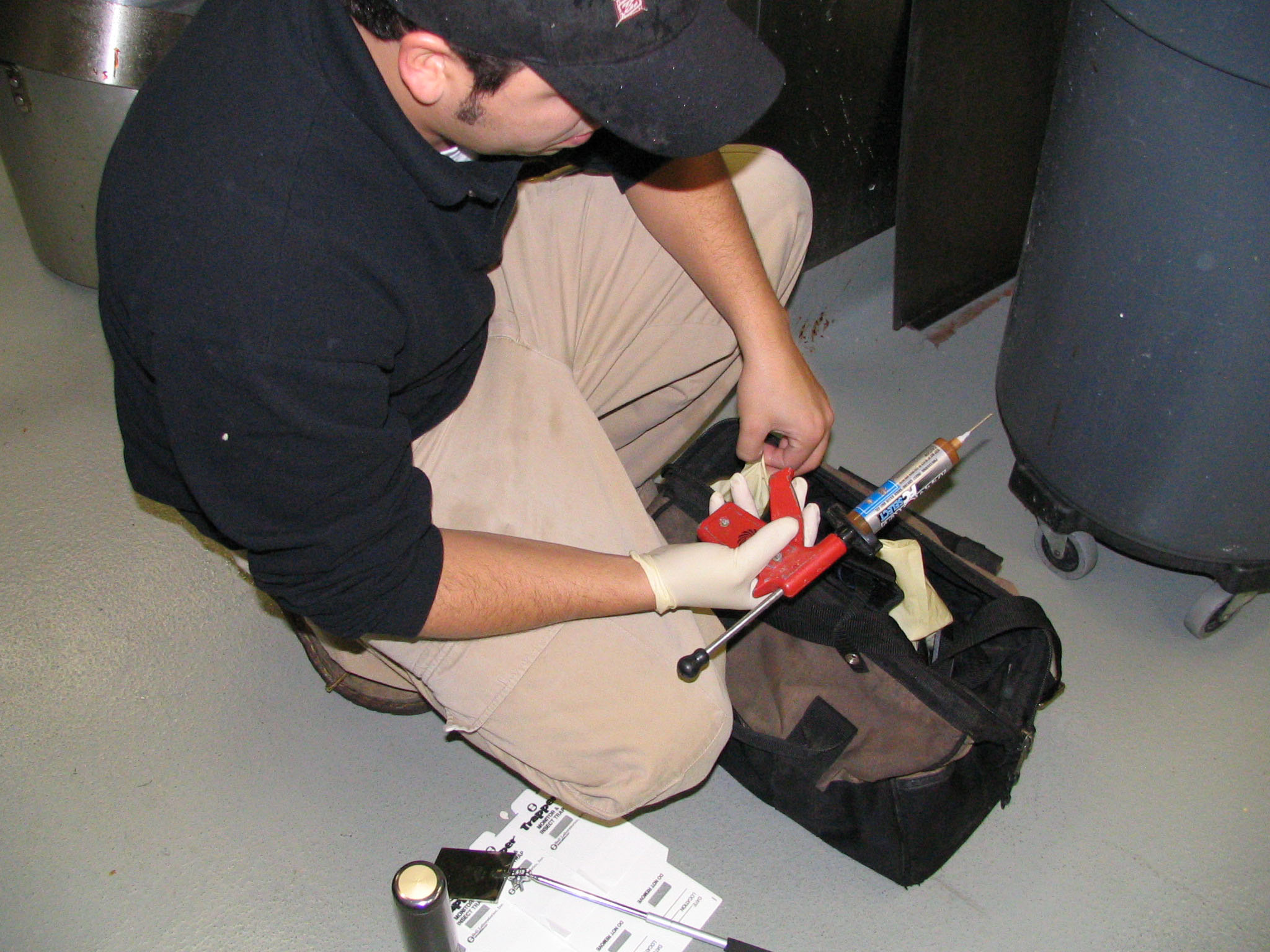| Section
4. Following the EcoWise Standards
To provide EcoWise Certified IPM Services, you must follow
the EcoWise Standards. The EcoWise Standards are the key to
successful execution of an EcoWise Certified IPM Service,
and you should be especially familiar with the Pest Management
Standards, Sections 100 through 105 of the Standards. Section
100 of the Pest Management Standards mandates pest prevention
techniques, integration of multiple treatment strategies,
and an IPM Partnership with the customer. Section 101 covers
inspections, monitoring, pest biology and history, partnership
with the customer, written IPM plans, and recordkeeping. Section
102 covers EcoWise Pesticide Application Standards. Section
103 covers recordkeeping. EcoWise in some instances allows
deviation from the Pesticide Application Standards. This topic
is covered in Section 104. Section 105 discusses how to terminate
an EcoWise certified service with a customer. Pesticide Application
Standards were covered in detail in Part A Section 4 of this
Online Orientation.
The EcoWise Standards have a step by step approach for customer
interaction and pest management procedures. These procedures
are summarized in the following schematic:
Pdf Link: IPM
treatment schematic
The IPM Practitioner should interview the client and record
the history of the pest problem. This interview is very important
because you should determine the customer’s attitude
toward pesticides, whether or not they are chemically sensitive
and other problems they might have.
The interview is followed by an inspection of the property.
Pest locations should be determined. The pest should be identified
and population levels estimated. The Practitioner should identify
conducive conditions and note habitat modifications and sanitation
measures that might be useful.
After the inspection, the customer should be interviewed again
and apprised of the situation. Options for treatments should
be discussed, along with possible outcomes. These steps are
outlined in Section 101 of the Standards.
The IPM Practitioner then presents the client with a written
IPM site plan for the pest. Your company may already have
this written as an IPM Protocol for the particular pest. Refer
to Section 101.7 and 300.5 of the Standards.
After these preliminaries are completed, treatment can begin.
Primary treatments should be non-chemical such as sanitation,
habitat modification, physical, mechanical and cultural controls.
If these controls are inadequate, unsatisfactory, or not economically
viable, reduced risk chemical controls can be used. In some
cases, such as the use of baits, baits can be used simultaneously
with non-chemical methods.
If chemicals are applied, risk must be minimized and pesticides
should be applied according to Section 102 of the Standards.
They are applied as a directed treatment to cracks and crevices,
as a spot treatment outdoors, as a spot treatment indoors
with pesticides exempt from registration in California or
in a bait station. Fogging cannot be used where people live
or work. No perimeter treatments can be applied unless it
is an EPA 25b exempt material that is also exempt from registration
in California.
Pesticides used must be part of your company’s IPM toolbox
that has been approved by the EcoWise Program Director. Pesticide
evaluation criteria were covered in Part A of this Course
and can be found in Appendix A of the EcoWise Standards. For
convenience, there is a list of pesticide examples in Appendix
A that have been approved in the past.
To make the concept clearer, pest management according to
EcoWise Certified Standards are presented in the schematic
below:
Pdf Link: EcoWise
Pesticide Treatments

photo
courtesy of Pestec
The
IPM toolbox is an important part of providing IPM service
Although the Pest Management Standards are extremely important,
an EcoWise Certified IPM Practitioner should be familiar with
all parts of the Standards. The EcoWise Standards also have
instructions on how to get certified, how to renew your certification
and other important points. You will be asked questions about
the Standards on the IPM Practitioner exam. If you do not
have yet have a copy of the Standards you can find them at
the link below
:
Pdf Link: EcoWise Certified
Standards
<=Back
Next=>
|
